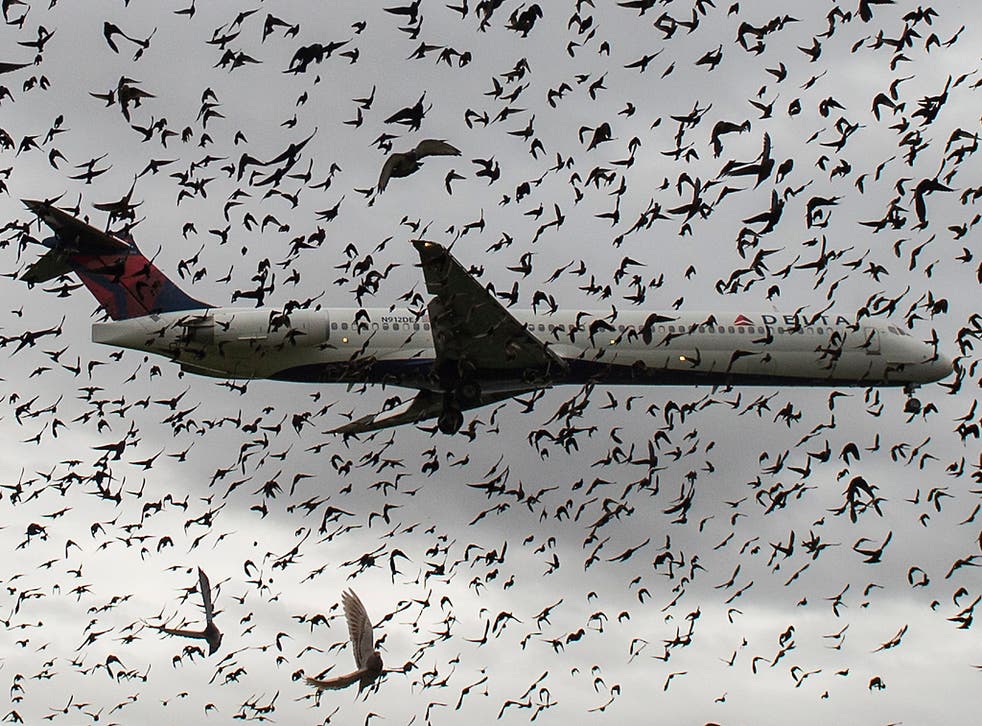Wildlife Hazard Mitigation
Aircraft and bird collisions are known as bird strikes and are a very severe threat to aviation safety. Bird strikes are nothing new to the aviation world. The first one was recorded in 1905 by the Wright brothers. The most famous one would be in 2009 when Captain Sullenberger landed US Airways flight 1549 in the Hudson River after striking a flock of Canadian geese resulting in dual engine thrust loss. (Strategies, n.d.)
According to the Bird Strike Committee that was founded in 1991, bird and other animal strikes cause approximately $650 million in damage annually to civilian and U.S. military aircraft every year. Bird strikes account for 97% of wildlife hazards. While mammals account for 2% and bats and other reptiles account for 1%. (Administration, 2022) The aviation bird-strike hazard is an industry, worldwide problem that affects everyone from pilots, mechanics, airport operators, wildlife analysts, and anyone to do within the aviation industry. (Strategies, n.d.)
To avoid any kind of bird strike situation, airports have wildlife management programs. These programs use research detection and modify habits to make the area around the airport less attractive for certain species based on data received from the National wildlife strike database. (Administration, 2022) A few ways management programs work are by habitat modification, active dispersal, trapping and relocation, and lastly lethal removal permitted by airport depredation permits. (Wildlife, n.d.)
14 CFR Part 139.337 details the airports obligation of how and when to conduct wildlife hazard assessments and how to create a plan. Advisory Circular 150/5200-32B deals with reporting and clarification for the wildlife strike reporting procedure. Advisory Circular 150-5200-38 is the protocol for the conduct and review of the wildlife site visits, wildlife hazard assessments, and plans. (Administration, 2022)
Drones are being utilized in new techniques for monitoring and detection to keep habitats from being appealing to birds and other animals. I think this is a great start and a great way to adapt to the new challenges as more data comes in to mitigate this issue. Bird strikes were lower on the list of environmental programs with the FAA, but in my opinion, it’s an important step as any that have been presented by the agency as it directly involves safety.
References
14 CFR § 139.337 - Wildlife hazard management. (n.d.). LII / Legal Information Institute. https://www.law.cornell.edu/cfr/text/14/139.337
AC 150/5200-32B - Reporting Wildlife Aircraft Strikes – Document Information. (2022, December 7). https://www.faa.gov/airports/resources/advisory_circulars/index.cfm/go/document.current/documentnumber/150_5200-32
AC 150/5200-38 - Protocol for the Conduct and Review of Wildlife Hazard Site Visits, Wildlife Hazard Assessments, and Wildlife Hazard Management Plans. (n.d.). https://www.faa.gov/regulations_policies/advisory_circulars/index.cfm/go/document.information/documentid/1020779
Administration, F. A. (2022, October 12). FAA Wildlife Video. YouTube. https://www.youtube.com/watch?v=f2nuO4PZKF0&feature=youtu.be
Strategies for Prevention of Bird-Strike Events. (n.d.). https://www.boeing.com/commercial/aeromagazine/articles/2011_q3/4/
WILDLIFE HAZARD MANAGEMENT PROGRAM. (n.d.). http://www.flyrdm.com/?Wildlife-Management-Program

Comments
Post a Comment